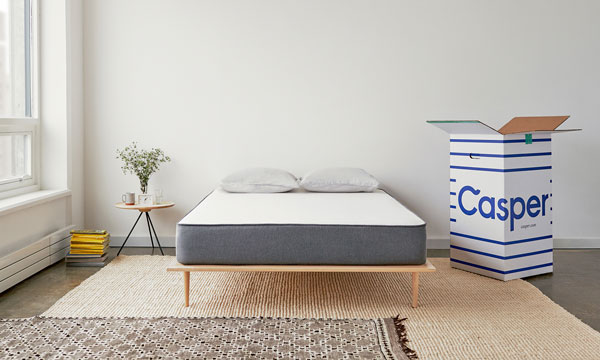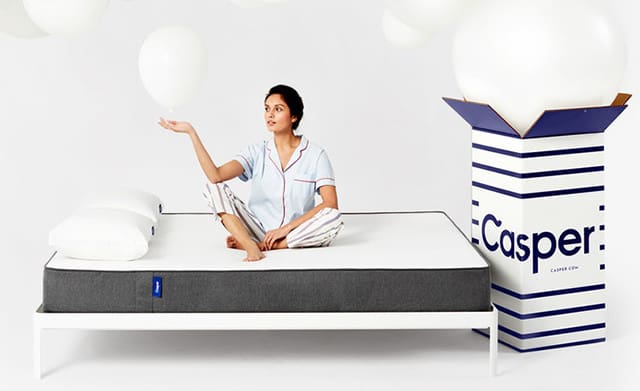We are by now very much aware of the impact of e- commerce. But we are still very much at the beginning of change as many smart ventures make use of the internet in new, creative ways to make new waves. One such creative way/model making waves is D2C or Direct-to-Customer, and the center of this wave is in America. It is beyond online sales, as it employs new advertising and branding techniques alongside A.I. data collection methods.
Cosmetics, luggages, mattresses, spectacles–Areas that seem distant from technology now sees new ventures sprouting out with high-level tech and data science used alongside social media marketing to create strong brand narratives unseen in traditional retail brands.
D2C is a retail model that communicates and sells directly to customers, thereby reducing selling price by bypassing any third-party retailers, wholesalers, or any need of advertising agencies. Common practices of D2C brands include using the latest technology for data science and new marketing methods. The lack of a need of a physical store also means low upfront investments and low risks. Today I would like to share the features of D2C brands with mattress D2C brand Casper as an example.

Casper is priced competitively with an average price of 400-600 dollars as compared to the industry average of 800-1000 dollars.
It is said that 1/3 of shopping mall tenants in America are in risk of closing. The number 1 retailer in America since the start of the 1980s, Sears, applied for bankruptcy in 2018. In 2016, it had around 1600 outlets but there are now down to around 200. In the backdrop of this decline in the retail industry, we see D2C brands continuously opening new retail outlets. In fact, in the New York Soho area where luxury boutiques like GUCCI and Apple stores are lined up, countless new D2C outlets appearing.
As forementioned, Casper is a mattress D2C brand founded as a startup in 2014 by 5 guys that managed to be valued at $1.1 billion USD by 2019–in just 5 years. Let’s look at the differences in customer flow with traditional retailers.
How you purchase mattresses with traditional retailers start with going to a huge department store laid with endless options of mattresses. You decide on the purchase with references
from advertisements of kids sleeping soundly, the sales person,’s advice and experiencing the actual products.
Upon purchase you are informed that the mattress would be delivered over another day with a considerable delivery fee. Days later, the product would come delivered in cardboard packaging.
Let’s compare that with Casper’s customer flow. First, you access a website with a modern interface design. Without the need to go down to the store, you get to order conveniently. You decide with references from reviews from other customers and you can purchase with assurance of a 100 day free return guarantee. The mattress come in compact packaging days later.
D2C brands are not just selling products, they are selling lifestyle. Modern consumers are not just buying ‘features’ but emotions as well. Let’s look at the differences between
traditional mattress brands and Casper.
Casper’s CEO Phillip Krim once said:
“Nike made active lifestyles appealing and Whole Foods popularized healthy eating, and we think the third pillar of wellness is sleep”
Using sleep, Casper created a new lifestyle and is aiming
to craft culture surrounding that. For instance, they self-published a wellness-themed magazine called WOOLLY1 and developed podcast2 programmes on sleep; these are further extended with instagram contents(170k followers). To be seen as an authority in the field increases the brand's trustworthiness. By the way a D2C luggage brand AWAY ‘s magazine [here] is even receiving advertising revenue for featuring other brands.
If you visit Casper’s flagship store in New York, you get greeted by several huge bedroom booths. Beyond mattress and pillows but also a bedroom
light called ‘The Glow Light’4 and even a mattress for dogs3.
The Glow Light operates by gentle touches and shakes, and can
sync multiple lights at once. Furthermore, they have a afternoon nap bar called 'The Dreamery' 5 where you can sleep 45 minutes for 25 dollars upon registration on its website.
Casper is centered around ‘sleep’ rather than mattresses as products. By doing so, they can more easily expand into a wider variety of products and services and build a brand strategy. It would not surprising if they started selling pyjamas tomorrow. Beyond products they expanded into other value forms like audience aggregation with ad revenues from their magazine and charging fees with napping spaces as shared resources.
D2C brands recruits a decent amount of engineers and social media marketing experts often from the start. They would undergo data analysis and social media communication while using the data gathered for detailed analysis. A D2C startup that achieved a certain level of growth would hire tens of data scientists, covering about 10~20% of employees.
Beyond marketing, data is used on areas like retail location
strategy and product development. The location of their retail outlets are based on where their brand name are searched from the most. Casper also has a 15000 strong community that aids in product development. They have sensors embeded in their mattresses to collect data that improvesfutureproducts.
Casper has no springs in its mattresses, making it possible fit it into a small-fridge-sized packaging. It not only reduces transport space and cost but also makes it convenient for the customer to handle. Moreover, how the mattress bloats into its final form is interesting enough for many to shoot unboxing videos, providing free advertising for Casper. This shows how designing packaging according to online brands and delivery can lead to much added value.

D2C brands are also becoming increasingly common in Japan–proof that it is a borderless phenomenon. For instance, cosmetic brand SKIO provides knowledge on skin and various brand stories on their website, they also designed their packaging with bubblewrap, making it perfect for delivery with little wastage. Appliance brand BALMUDA who is famous for their toasters and kettles also mentioned that users who read their brand stories and articles are significantly more likely to buy their product.
I believe D2C is still in an early stage with many untouched fields and ideas to explore. A key takeaway is to aggressively research and develop new ideas, to breakthrough from current norms and to create the future of retail.